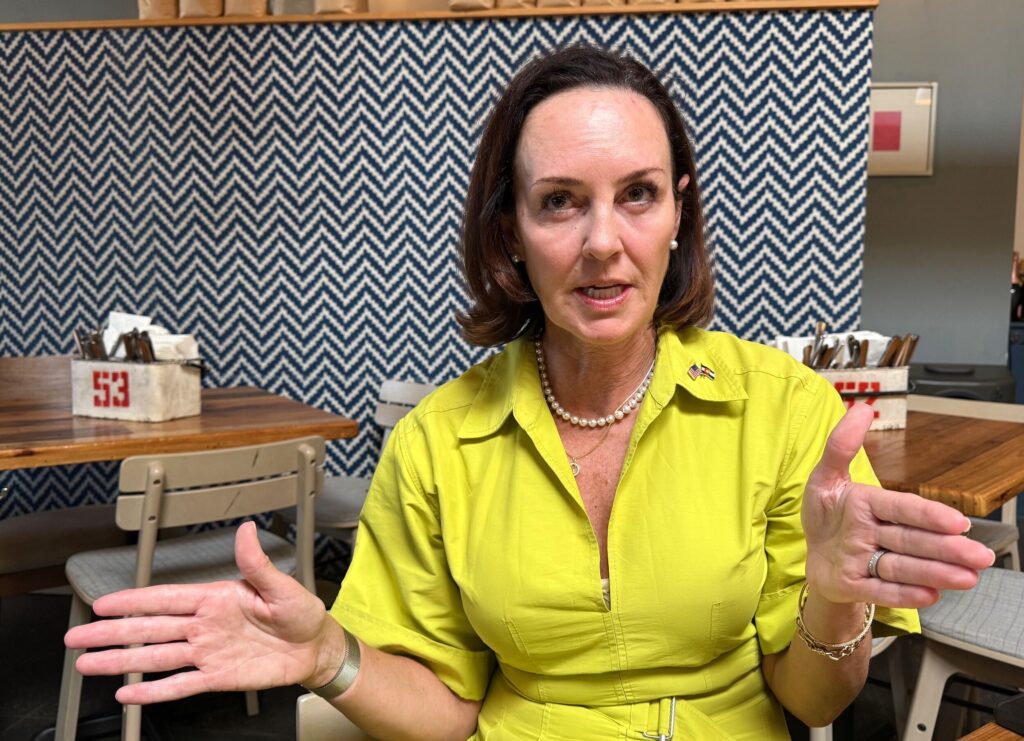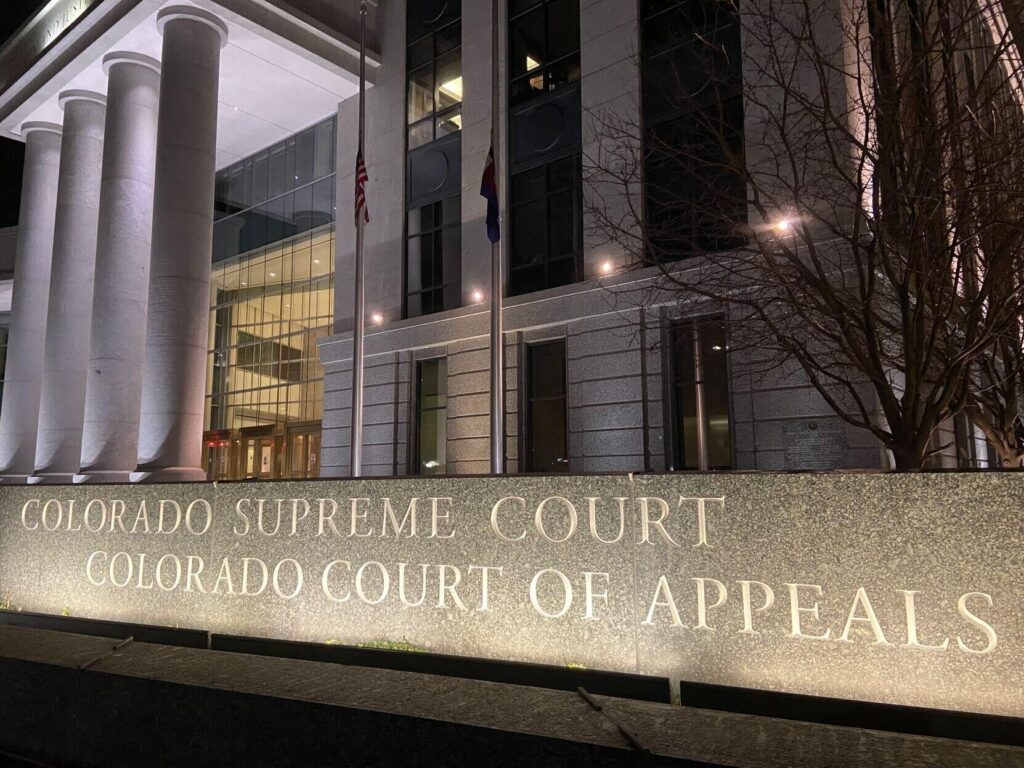TRAIL MIX | Live, from New York, it’s real-time polling of Coffman-Crow race

Liberal bloggers have taken to calling it “Crowmentum,” and national election forecasters appear to be acknowledging it’s happening.
For the first time in the suburban 6th Congressional District’s history, a publicly released independent poll found U.S. Rep. Mike Coffman’s Democratic challenger – this time around, Jason Crow – running ahead of the five-term Republican incumbent in the district, which includes parts of Adams, Arapahoe and Douglas counties on the east side of Denver. And not by a little.
The poll, conducted Sept. 12-14 by The New York Times and Siena College, put Crow an eye-popping 11 points ahead of Coffman, outside the poll’s 4.8 percent margin of error.
That’s never happened before in the district, which has been a top target for Democrats since 2012, when it was redrawn from a solidly Republican seat to one of the most closely divided seats in the country. Year after year, polling has shown a competitive race, but independent surveys – at least those released to the public – haven’t ever shown Coffman behind a Democratic challenger.
While a handful of internal polls have shown Coffman trailing Crow by a point or two in previous cycles, according to campaign insiders, he’s wound up trouncing his previous well-funded, high-profile Democratic challengers by wide margins – defeating former Senate President Morgan Carroll by 9 points in the last election and burying former House Speaker Andrew Romanoff two years earlier by about the same.
That could be why national groups that forecasts election results – including the FiveThirtyEight blog and the Center for Politics – has shifted the race from the toss-up column toward the Democrats, including two that made the move this week.
The Coffman-Crow matchup was one of dozens The New York Times polled “live” – with survey findings published in real time – in what the Times pegs as the most competitive House and Senate races ahead of this year’s midterm elections.
The poll started on the afternoon of Sept. 12 and finished around dinner time Sept. 14, after pollsters had tabulated 500 responses. During that time, readers could watch at nytimes.com as individual calls were completed and added to the mix of data. Those appeared on a map of the district as red dots representing a vote for Coffman, blue dots for Crow, and as the hours passed and the number of respondents ticked up, the margin of error declined.
For political junkies in Colorado, it meant hitting the refresh button and battling it out on social media. In one of the more alarming developments resulting from the poll, Coffman campaign manager and Twitter warrior Tyler Sandberg vowed to “shave Alan Franklin’s back hair on election night” if the poll turns out to be accurate, referring to the ProgressNow Colorado provocateur and Sandberg’s frequent Twitter sparring partner.
Franklin responded: “I wasn’t excited for election night, but now … !”
The poll didn’t just update results on a live basis, it showed readers how a slew of assumptions – about the electorate and who will turn out to vote – shape the data as it’s collected and calculated.
“No media organization has ever tried something like this, and we hope to set a new standard of transparency,” Times correspondent Nate Cohn wrote in an article introducing the project. “You’ll see the poll results at the same time we do. You’ll see our exact assumptions about who will turn out, where we’re calling and whether someone is picking up. You’ll see what the results might have been had we made different choices.”
Those alternate scenarios offer a fascinating glimpse under the poll’s hood.
For instance, Crow’s lead jumps to 17 points if only the people who say they are almost certain to vote are the only ones who turn out, though it slips a point to 10 points if the pollster just counts people whose voting history suggests they’ll turn out, regardless of what they say in the interview.
This suggests Crow supporters – and Democrats – are extremely motivated ahead of the election, while Coffman supporters – and Republicans – aren’t as much. That’s a conclusion shared by other Colorado pollsters contacted by Trail Mix in the week after the New York Times poll was conducted, who say that’s exactly what they’re finding.
But both Crow and Coffman supporters agree it’s far too early to pop those corks. The race is far from over.
For one thing, as polling in previous years has demonstrated, it’s an extremely difficult district to poll, and opinion surveys consistently miss Coffman’s strength with voters.
That matters because Siena College hasn’t polled before in the district – or in Colorado, for that matter – so could miss plenty of nuances that snowball when you’re representing hundreds of thousands of voters with a 500-member sample.
One big difference, says a longtime Coffman strategist who has sliced and diced data compiled over the last decade, is the district’s sizable immigrant community, which amounts to around 20 percent of its residents – including groups that have known the incumbent for years and have consistently thwarted efforts by Democrats to woo them into voting against Coffman.
On the ground, that means that an African-American Democrat in his 30s who lives in central Aurora, for instance, has a good chance of being a first-generation Ethiopian immigrant, far more likely to vote for Coffman than the typical voter who shares those demographic characteristics.
As the Times cautions again and again in its report on the poll, there’s a blizzard of variables that can influence the results, which means any one poll should be taken with a grain of salt and considered for what it is – a snapshot of voter opinion that has a reasonable likelihood of matching what you’d find if you talked to everyone the sample represents.
And while there could have been some squeals of delight and worried groans expressed behind closed doors, that’s how the Coffman and Crow campaigns are reacting to the results.
Mitch Schwartz, a Crow campaign spokesman, shrugged off the results in a phone call with Trail Mix several days after the poll concluded, maintaining that he hadn’t heard a single mention of the poll from anyone except reporters.
“We’re keeping our heads down,” he said. “It doesn’t change anything about our approach.”
His counterpart with the Coffman campaign agreed.
“This is where the race was in 2012, 2014 and 2016,” Sandberg told Trail Mix. “This is a margin-of-error race. We’re looking at a challenging environment like we’ve faced every year, and Mike has shown he’s resilient in the face of challenges.”
He added: “If Democrats want to underestimate Mike Coffman, I’m more than happy.”














